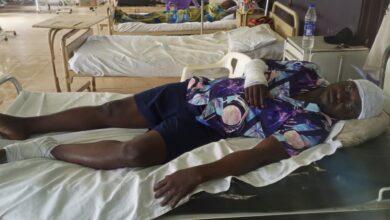NOTAP Inaugurates Publication on Commercialisation of R&D Results, Inventions

The National Office for Technology Acquisition and Promotion (NOTAP) on Monday in Abuja officially inaugurated a publication on commercialisation of Research and Development (R&D) results and inventions for economic development.
The Minister of Science and Technology, Dr Ogbonnaya Onu, while speaking at the inauguration said the R&D results were important to add value to the enormous pool of innovation produced in the country.
Onu commended the efforts of NOTAP to produce a comprehensive guideline for the science and technology community, adding that the publication would help move research and development from the shelf.
He urged that the publication should be made available to scientists, inventors, innovators, research and knowledge-based institutions both at home and abroad.
Earlier, Dr DanAzumi Ibrahim, the Director-General of NOTAB said that protection of indigenous intellectual property would yield positive economic result and rapid national development.
Ibrahim said this while presenting a paper titled: “ Guidelines on commercialisation of research and development results and invention in Nigeria’’.
He stressed the need to popularise the importance of protecting intellectual property rights to aid national development.
He said the world was moving from a resource economy to a knowledge-based economy and Nigeria could not be left behind.
He added that the best way intellectual property could be properly managed was to patent and commercialise it by translating it into goods and services that could be useful locally and internationally.
“Intellectual Property is a creation of the mind such as inventions, literary and artistic works but if it is not properly managed and patented, anyone can take your idea and start using it as their own.
“ Developed nations are called developed because such nations pay attention to science and technology and they also commercialise them into goods and services.
“ Patenting of technologies gives a researcher or inventor exclusive monopoly to use it in the country and worldwide, it will also improve economic yield if it is eventually commercialised,’’ he said.
Ibrahim urged university professors, researchers, and inventors to cultivate the habit of patenting their works before rushing to publish their works.
“Research works should not just be reduced to shelf publications or for work promotion purposes but to address economic challenges, create jobs and national development.’’
He however decried the absence of a National intellectual property policy, poor awareness of patenting, low investment in research and development activities by both the private and public sector.
“Low commercial content of domestic research and development results amongst others are other challenges.’’
He assured participants that NOTAP was working tirelessly to address bottlenecks to protect intellectual property rights in the country so that works could be patented and not remain on the shelf of research institutions.
Ibrahim said that protection and patenting of indigenous technology would save the country from over dependence on foreign technology and capital flight.
He said it would also help development of intellectual property, establish the presence of an inventor in the market and encourage more innovation and competitiveness locally and internationally.
The News Agency of Nigeria (NAN) reports that NOTAP is an agency under the Federal Ministry of Science and Technology established to track the inflow of technology into Nigeria for adaptation and domestication.
NOTAP also coordinates Nigeria’s initiatives in technology transfer, evaluation and registration of technology transfer agreements, promotion of innovation, patenting and intellectual property amongst others. (NAN)
TOLU/GOM/GY




